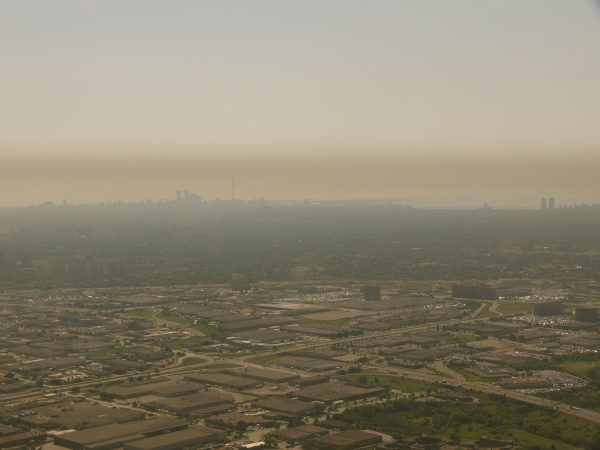
What will future residents of Scarborough think, 30 or 40 years hence, when they cast their minds back to the craven transit decisions being made today by the likes of Mayor John Tory and his deputy, Glenn de Baeremaeker?
I’m guessing those voters — some not yet born, others not yet living in Canada — will be mightily pissed at us for putting political self-interest and short-term calculation above their needs.
After all, what they’ll see is a city with three major LRT corridors — the Eglinton Crosstown Phase One, the Crosstown Phase Two from Mt. Dennis out to the airport, and the Finch West line — extending deep into the western reaches of Toronto. Not to be overlooked: an important new GO/Smart Track transfer at St. Clair West, and the UP Express stops – 39 stations in all, on a multi-modal, integrated grid.
As for Scarborough? They’ll have the single-stop Scarborough subway extension (SSE), which will soak up pretty much all of the $3.56 billion of available transit funding for that part of the city, plus two or three Smart Track stations and, maybe, an unknown number of stops on the hopelessly mired Sheppard East LRT. In the best case scenario, 14 new stations (or a net eight, if you count the eliminated Scarborough RT stops), with nothing that even faintly resembles an integrated network.
If you think the politics of east-west resentment is toxic now, just wait until mid-21st century. The mention of de Baeremaeker et al will bring sneers of derision, not cheers of gratitude.
Over time, in fact, the west end of Toronto will gradually become home to greener, healthier and more compact communities compared to those in Scarborough, where the grim consequences of building the SSE at all costs will almost invariably mean the cancellation of the extended LRT routes along Eglinton East, Morningside and links north to Sheppard that council approved this spring.
In west Toronto, future residents will enjoy a range of transportation choices as well as more compact residential options, higher property values, and the myriad quality-of-life benefits that come from reduced car use.
In east Toronto, by contrast, today’s limited choices will be baked into the urban landscape in the guise of traffic congestion, under-investment, and a dearth of transit options for lower-income residents who can’t afford private vehicles.
As Cherise Burda, director of the Ryerson City Building Institute, points out, “The low ridership projections for the subway reflect the car-dependent built form that will persist for decades to come. With only one [subway] station available to commuters, car travel will increase, not decrease, in a large swath of Scarborough.”
Perhaps no one should be surprised at the myopic calculations of Tory and de Baeremaeker; that’s what local politicians do. What’s more shocking, Burda pointed out last week, is that these choices explicitly undermine the ambitious climate change commitments recently made by both Kathleen Wynne’s Liberals and Justin Trudeau’s government, which together are contributing 75% of the capital costs for Scarborough rapid transit.
Ontario’s climate change plan, released to much fanfare last month, correctly identifies transportation emissions as a major culprit. Observing that “emissions from passenger car trips alone (well over 10 million per day) are greater than the emissions from Ontario’s iron, steel, cement, chemicals sectors combined,” the document cites studies showing that “compact, mixed-use and pedestrian-oriented city designs can decrease transportation emissions per household by 24 to 50%, compared to conventional suburban neighbourhoods.” As the plan further notes, “Establishing emissions reduction as a priority will embed low-carbon design in long-term decision-making, and help in the fight against climate change.”
Yet the SSE does precisely the opposite – there are fewer stations than today, and the net new daily ridership by 2031 is projected to be 4,500 commuters, representing a paltry 0.3% increase to the TTC’s current system-wide daily ridership, essentially the same as a rounding-up or down error. Burda notes that those low figures reflect the reality that Scarborough Town Centre, where the SSE will end, is exceedingly difficult to access except by car or bus, and that the area’s built form is not going to change anytime soon.
The Trudeau Liberals, in turn, arrived in office pledging to end the climate denial of the Harper government. They signed onto the Paris Accord, and have made climate a core component of their massive infrastructure program. As Trudeau said in his mandate letter to infrastructure and communities minister Amarjeet Sohi, Ottawa must be making “significant new investments in public transit [and] green infrastructure…” Continental climate and clean energy pacts, in fact, were front-and-centre during last week’s Three Amigos summit.
Yet no one’s bothered to do a side-by-side analysis of the climate benefits of the SSE relative to a Scarborough LRT network linked to Smart Track and the Kennedy subway station. The city’s voluminous planning documents, tabled at last week’s executive committee meeting, contain but the thinnest analysis of the comparative climate implications of the various lines/configurations.
Rarely did the planning staff go beyond stating the obvious, which is that transit reduces emissions. But given the new information about the grossly inflated cost of the SSE ($2 billion to $3.16 billion), Toronto’s planners haven’t explained to councillors or the public the environmental implications of selecting one Scarborough option (SSE) over another (LRT). All we have, coming out of the executive committee meeting, are vague pledges that the needed LRT funding will be found, which, frankly, defies credulity given the financial requirements of unfunded projects like the Relief Line and the Queen’s Quay East LRT.
Nor have the feds or Queen’s Park said boo in the past few weeks about the (mis)use of their respective billions. In fact, the prevailing (passive) philosophy in Ottawa is for the feds to hand over the cash and let the municipalities spend it as they wish. Both orders, for political reasons, want to be seen to be trusting of local partners so they can set their own priorities.
But how are we to respond when the judgment-challenged municipal partner is poised to take all that federal and provincial money and use it for politicized reasons that make a mockery of the visionary climate goals put forward by the higher orders?
One conclusion: that venal, short-term thinking inevitably trumps those broader objectives, and such unintended outcomes will likely occur not just in Toronto but elsewhere in Ontario and Canada. The other: that the presence of progressive, urban-minded MPs and MPPs in both governments – and you know who’s on that list – hasn’t made one whit of difference when it comes to the robust implementation of these complex, long-range strategies.
Indeed, when it comes to climate change policy — which is focused more on the medium- and long-term future than almost any other government initiative — the current SSE debacle foreshadows just how hollow these lofty green-red pledges are going to be.





7 comments
Sadly, the way things get planned approved in Toronto is backwards. Instead of defining the budgets to spent first, projects are defined and then price tags attached. So instead of asking for the best 10, 12 and 15 billion dollar transit plan to improve the whole of the city, we have parcelled out little fiefdoms of SSE etc to get defended in principle and yet unfunded in reality.
Seems like a fantasy democracy when the public is engage to participate in all sorts of planning endeavours that may or may not get approved at all levels of committees and then councils. The only true decision makers are the ones that put dollars to projects.
There’s a lot more that could be said about this lack of interplay between climate realities and the mywardopic visions of many politicians. Given that the transport emissions have dominated the GHG counts of Ontario at least for the last longer while, absolutely there’s got to be improvements, and not just throwing billions at transit and hoping.
Only in the latter stages of this piece do we get some pressure on the hands-off , no principles or restrictions on the cash of the other levels of government in the buy-election scheming that we’ve been getting. Is there really no set of checks/hoops ahead of a big cheque?? So what if it doesn’t make sense and will blight other budgets and other areas? If it’s OK’ed by the City, it’s OK by us is the line it seems.
Trouble is that approach squanders opportunities and ignores the depth of the problem. Sure, we can have an EA for the UPX, and it can be structured to ignore options, and ignore how gross a polluter Pearson actually is, and since we don’t count aircraft emissions anywheres, heck, enabling passenger flow by transit is relatively ‘green’.
We can’t necessarily rely on progressives either: there’s a remnant bit of the Front St. Extension now kinda approved, the local road between Strachan and Dufferin. While the larger road folly was cut out, there was still Zero consideration of transit options except for what might be taken from the regional service, and so the proposed road supported by Mike Layton and Gord Perks will enable car travel in/out of the somewhat isolated Liberty Village area, and Zero thought of that direct route in from Etobicoke as outlined by the DRL plan of 1985 using that same land. And it’s all now likely badly constrained by buildings, and expectations of buildings and the idea that it’s a great place for a subway, some decade, maybe, and by allowing all sorts of buildings (some blame to the province and the OMB), it almost sets up a subway-only approach.
It’d help if EAs actually counted concrete usage and emissons, maybe that’s the layer that the federal level could apply as it’s a clear deficiency of the provincial EA process, that’s truncated to any form of transit as long as it’s what we want it to be.
Something that isn’t being mentioned: no one wants to live in areas that are difficult to get to. That means house prices and rents are depressed (compare the cost of houses in far-flung rural townships with a million+ city in Canada).
Who lives in neighbourhoods with depressed house prices and rents: poor people (those who don’t have the money to choose to live elsewhere).
Eliminating transportation options in Scarborough will reinforce the impression the rest of the city already has: poor people, with no better options live in Scarborough.
Or people silly enough to keep re-electing Glenn de Baeremaker anyway.
Its simple. Scarborough has about 26% of the population of Toronto. Give us 26% of the total budget for transportation and infrastructure. Then maybe we can move our libraries out of strip malls and build the kind of systems that the west end has enjoyed for years.
One thing not addressed in the article: Timing.
If Transit City had not been foolishly cancelled, the Sheppard LRT would have started running last year. And all the rest of the entire network would be either open right now or in the advanced stages of completion. Right now. Today. Fully funded by the provincial government.
But building a subway? That takes not only billions of dollars, but a long, long time.
ANDREW: Yes, Scarborough has 26% of the population, but its on about 35-40% of the city’s land. Whereas the Old City of Toronto has about 25-30% of the city’s population, but on about 20% of the city’s land.
Formulas like what you propose just don’t work. It means providing coverage in a very non-efficient way. And it’s a distraction from the realities of transit planning.
What if the city gave 26% of the fund for transit to Scarobourgh? Glen DeBaermakker would spend it all on a one stop subway that doesn’t really address the population’s needs.
Lula
I like your numbers. Give scarborough 35-40% of the funding.